On this explosive Naked Scientists, explore the science of explosions, looking at what happens when a landmine explodes and how to study shockwaves. Plus, how to make safer 'insensitive' munitions, and the 'ecology' of insurgency. Plus, how infected cells accelerate the infection rate, why your memories are stored in a grid and in Kitchen Science we show you how to do a controlled explosion in your own home!
In this episode

Infected cells bounce away incoming viruses to accelerate spread
Scientists have discovered a trick used by some viruses to speed up the rate at which they spread - infected cells bounce incoming viruses away towards new cells.
Using video recordings, Imperial-based virologist Geoff Smith and his colleagues were able to watch as vaccinia virus, a member of the poxvirus family that was used to eradicate smallpox,  infected a sheet of cultured cells under the microscope.
infected a sheet of cultured cells under the microscope.
By measuring how quickly healthy cells adjacent to an infected cell began to show signs of infection, the team were able to calculate the rate at which the vaccinia virus was spreading. It turned out to be at least four times faster than it ought to be.
Previously, scientists had thought that viruses emerging from an infected cell would infect the adjacent surrounding cells, which would then in turn infect their neighbours, and so on, causing the infection to spread out radially. But the video sequences showed that this cannot be the case. In fact, infected cells were popping up several cells away from the nearest infected neighbour.
By labelling different components of the cells and the viruses the team discovered that when a cell is infected by the virus it adds two viral proteins, called A33 and A36, to its surface, which marks it as having been "hit". If a new virus then tries to enter a cell marked in this way, the two proteins trigger the cell to eject the virus using a structure known as an actin tail, which resembles a molecular spring. This bounces the virus off in the direction of other cells that may not yet have been infected.
The labelling experiments even revealed that the same virus particle can be relaunched in this way several times! The discovery is exciting because, as the researchers point out in their paper in Science, many other viruses, including human pathogens like the cold sore agent,herpes simplex, spread across cells at the same rate as vaccinia.
This suggests that other viruses might use the same trick, which might therefore be a important target for future antiviral drugs.
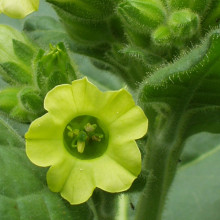
Crafty plants pick and choose their pollinators
Plants get up to all sorts of clever tricks to persuade animals to pay a visit and pollinate their flowers.
Many animals are tempted by delicious smells and a reward of sugary, energy-rich nectar. But what if those visiting animals don't just take away their nectar reward - pollinating the plant in the process - but also leave behind a clutch of hungry, plant-munching offspring?
A new study has shown how some plants have come up with an ingenious solution.  They re-programme themselves to attract an alternative pollinator that doesn't produce herbivorous youngsters.
They re-programme themselves to attract an alternative pollinator that doesn't produce herbivorous youngsters.
Publishing in the journal Current Biology, Ian Baldwin from Max Planck Institute for Chemical Ecology in Germany and colleagues focus on a species of tobacco plant - Nicotiana attenuata - which responds to the spit of hawkmoth caterpillars and three days after an infestation begin to produce flowers in the morning instead of at night when the hawkmoths are at large.
Observing thousands of tobacco plants in the wild, the researchers discovered that following an attack of hawkmoth caterpillars, the flowers don't open as wide and produce less sweetly scented nectar. But that doesn't bother the day-flying hummingbirds, which begin to arrive and take on the role of chief pollinators. The team also studied genetically modified tobacco plants that lack a key hormone, called jasmonate, which is known to trigger a range of other plant defence mechanisms.
Unlike the wild plants, the jasmonate-free plants did not change the timing of their flowering when caterpillar spit was rubbed into a cut leaf. But they did respond when they were sprayed with the hormone, revealing the key role jasmonate plays in the chemical pathway between caterpillar attack and flowering.
Why do the plants bother attracting moths in the first place, instead of using harmless hummingbirds all the time? It seems likely that despite laying hungry caterpillars, the moths are more efficient pollinators and can be attracted from miles around. Meanwhile, hummingbirds don't travel as far and they ay they visit flowers tends to lead to more inbreeding within individual plants.
All in all, the best strategy for these tobacco plants is to use the reliable moth pollinators up until their hungry young come along. Then it pays to switch strategies and start attracting hummingbirds instead: very clever indeed.

Human spatial memory based on a grid system
Scientists have discovered that, at least when it comes to finding our way around, humans use the same neurological mapping system as rats and mice!
Studies on human volunteers carried out by UCL scientist  Christian Doeller and his colleagues have shown that a brain region called the entorhinal cortex contains a neurological grid system that represents a person's surroundings.
Christian Doeller and his colleagues have shown that a brain region called the entorhinal cortex contains a neurological grid system that represents a person's surroundings.
The grid is made up of equilateral triangles and when a person moves their position is "plotted" and tracked by altering the firing activity of the nerve cells that form the part of the grid representing the part of the world in which they are standing.
The insight for the discovery came initially from studies on foraging rodents in which scientists made recordings from individual nerve cells as the animals moved around. This first led scientists to realise that these animals were finding their way around by using this sort of grid system to orientate their movements relative to various visual landmarks.
It's not practical or ethical to perform these sorts of measurements in humans. Instead, the UCL team built a computer simulation to predict, based on what would happen in a rat brain, the pattern of activity that would be expected in a human if the same system of self-orientation is being used.
Then, 42 human volunteers were brain-scanned as they moved around a 3D environment shown to them through a virtual reality headset. Incredibly, the brain scanner was able to pick up in the subjects' entorhinal cortices the neurological signature predicted from the rat brain work, indicating that humans find their way around the same way rodents do!

Mysteries of Madagascar's wildlife solved
Over 80% of the plants and over 90% of animals that live in Madagascar are found nowhere else on the planet.
The big Malagasy mystery is how did all these species get there? 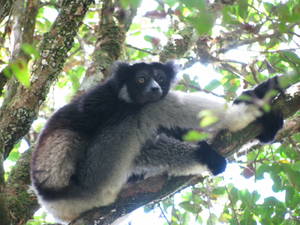 Now, a new study published in the journal Nature has provided strong evidence backing a theory that the ancient ancestors of Madagascar's mammals drifted hundreds of kilometres across from mainland Africa, clinging to rafts of floating vegetation. And that includes the most famous of Malagasy inhabitants: the lemurs, a type of primate - like humans - but unlike any other primates in the world.
Now, a new study published in the journal Nature has provided strong evidence backing a theory that the ancient ancestors of Madagascar's mammals drifted hundreds of kilometres across from mainland Africa, clinging to rafts of floating vegetation. And that includes the most famous of Malagasy inhabitants: the lemurs, a type of primate - like humans - but unlike any other primates in the world.
Using computer climate models to reconstruct ancient ocean currents, Jason Ali from the University of Hong Kong and Mathew Huber from Perdue University in the US, have shown that at around the time lemurs are thought to have arrived in Madagascar (60 million years ago), there were surface ocean currents flowing from northern Mozambique eastwards towards Madagascar; to ay the currents flow in the opposite direction, a change that took place as gradually Madagascar drifted northwards to its present location.
Ali and Huber found that for 3 or 4 weeks every century, the eastward currents were strong enough to propel a log from Mozambique to Madagascar in around a month. A small mammal, including the ancestors of the lemurs, could feasibly have clung on and survived for that long.
That may seem rather unlikely, but genetic studies suggest that it took fewer than a dozen colonisation events to bring all the mammalian ancestors to Madagascar, including carnivores, rodents and a crazy group of animals called tenrecs. And over the course of tens of millions of years, that certainly becomes possible.
This new evidence goes against another theory that Madagascar's animals walked there across an ancient land bridge. This alternative theory doesn't explain why other African animals, including many large-bodied groups like antelopes, elephants and apes, didn't also make it across to Madagascar.
As well as helping us understand how Madagascar's amazing wildlife evolved, but it also goes to show how much biology can tell us about the geology of the earth.
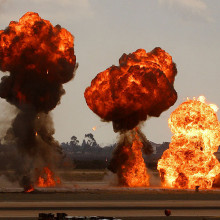
13:59 - Understanding Explosions
Understanding Explosions
with Dr Graham McShane, Cambridge University
Chris - Graham, welcome to The Naked Scientists. Good to have you with us.
Graham - Thanks, Chris.
Chris - So tell us first of all, what actually happens when something explodes? How do you try and understand that?
Graham - Okay. Well the starting point for any explosion is a lump of solid explosive. 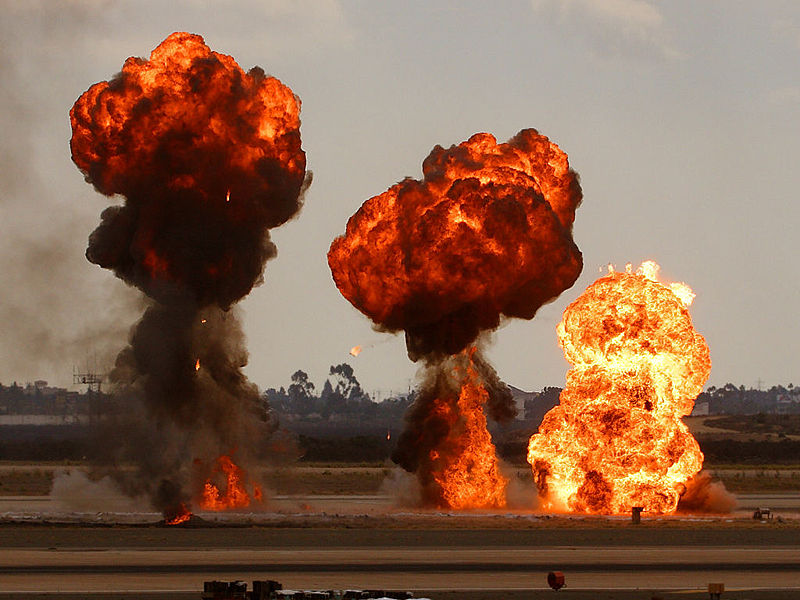 When that explosive detonates, it rapidly converts into high pressure, high temperature gas and that gas then expands and it pushes on its surroundings. That generates a pressure pulse or a shockwave which propagates away from the explosion and will strike some kind of structure that's nearby. The type of loading that explosion will generate depends strongly on the medium that's surrounding that explosive. We've looked at a couple of different types [of medium], and one type might be water. The explosive might be a bomb or a detonation under the water next to a ship. When that gas expands, it pushes on the water, compresses the water, and sends a shockwave towards your ship's structure.
When that explosive detonates, it rapidly converts into high pressure, high temperature gas and that gas then expands and it pushes on its surroundings. That generates a pressure pulse or a shockwave which propagates away from the explosion and will strike some kind of structure that's nearby. The type of loading that explosion will generate depends strongly on the medium that's surrounding that explosive. We've looked at a couple of different types [of medium], and one type might be water. The explosive might be a bomb or a detonation under the water next to a ship. When that gas expands, it pushes on the water, compresses the water, and sends a shockwave towards your ship's structure.
Chris - So a depth charge?
Graham - A depth charge or something like that. That's right.
Chris - In the context of a submarine or similar, this would be important.
Graham - That's right. Water is particularly dangerous from that point of view because it's a very stiff material. It's very difficult to compress. That means the pressures that can build up around the explosive are very large, so you can get shock pulses with very high peak pressures.
Chris - So, if a depth charge does go off within a reasonably close proximity of a ship's hull or submarine, how do you work out how much force is then transmitted onto the hull of the vessel?
Graham - Well that's very difficult to do. In terms of a research exercise, there are various things we could do to try and analyze what the loading that that blast imparts to the structure is. So, one thing we can do is we can try to simulate it in the lab. We can try to experimentally simulate an underwater shock pulse.
Chris - You'd have to build a warship or something.
Graham - Well, not quite a warship. We can reduce it down to maybe a small piece of a panel of a side of a ship and we can simulate the type of pressure pulse that you see in water near to an explosion. Then we can measure directly what the momentum, the velocity that's imparted to that structure is. Another thing we can do is do calculations, so we can run calculations where we simulate the pressure loading on a structure and then we can extract all sorts of information like the deformation of the structure and the forces that are required to hold the panel in place.
Chris - Does this mean that the people are now able to build better ships and better subs so that when these kind of shockwaves slam into them, they dissipate the energy better so that you don't get a hole punched in the side?
Graham - Yes. We've certainly come up with a number of ideas for different types of materials that can help to protect ships better. So, some examples are things like sandwich structures which you'd sometimes find in airplanes to provide you with a very light and stiff structure. In these types of structures you have solid face sheets with a lightweight deformable core in between them and that core can crush and dissipate some energy. These types of structures are very good at mitigating the effects of a blast near to the structure. But then, these things are much more expensive than conventional materials. So there's always a question of how much money you're prepared to spend to protect your ship.
Chris - But then, given the massive cost of a ship, it probably must be worth that because if you lose the vessel, you've lost a huge amount haven't you?
Graham - That's right. That's right. But then the cost could be enormous. It could be a huge amount extra. These types of materials that we've looked at are very much more complicated than a solid steel panel. You have to think about how to fabricate these things, how to make a ship-scale structure out of them, and then how to maintain them as well. So there are lots of added costs, but there are solutions that work well.
Chris - And looking on land, can you correlate what you understand and what happens in the water, the aquatic environment, to what happens on land? Obviously, air is a fluid too, it's just a slightly thinner one.
Graham - That's right, yes. I mean, an explosion in air shares many characteristics with an explosion in water. It starts off with the same basic physical principles. You start off with an explosive which converts to a gas and expands, and it compresses the air. The big difference is that the air doesn't compress so much, so the pressures that you generate are different, and also the way that the shock pulse interacts with the structure is also different in air and in water. In water, when the shock pulse reflects off a ship, it can cause the water to open apart, to cavitate. That doesn't really happen in air. So, there are different phenomena going on and that affects what your optimal solutions are for your material design.
Chris - Presumably also, when something explodes on land, it also doesn't just have liquid to play with. It's also got whatever is in the environment around it. So if you're detonating a landmine there will be a huge amount of material from the ground, emitted upwards and projected up alongside that rush of air, which in itself is going to be devastatingly harmful because it presumably will be like sandpaper a thousand fold over, won't it?
Graham - Absolutely. A landmine detonation is very different from an explosion in free air, far away from anything else. In a landmine explosion, your explosive is initially buried under a layer of soil. So, that gas, when it tries to expand, it has to compress that soil and shock waves pass through the soil, but the soil then expands out and it sprays at the structure at very high velocities. So the loading is very much more complicated for a landmine and it's taken a lot of research effort to understand what that loading is. Never mind thinking about what materials are best for protecting vehicles against that type [of explosion].
Chris - So it's not simply just the explosive force of the mine going off. It's the fact that all that material gets ejected too and it totally changes the dynamics of an explosion.
Graham - Absolutely. There are a number of factors in it. First off, when the soil starts to move, it starts to move extremely quickly, so it compresses the air around it and it'll send a shockwave ahead of it. So there is a bit of an air blast going on there as well. Following that, you got the sand flying behind it at very high speed. And then behind that, you've got all the gases, the remnants of the explosive which follow behind that. So it's a very complicated loading scenario.
Chris - And how do you study that?
Graham - Well again, we've got this combination of simple experimental techniques to try and capture the physics of what's going on and computational methods that can maybe capture more of the real landmine event. We can attempt to some extent to simulate a landmine in the lab, but the engineering department is a city centre location! It's not really suitable for setting off landmines. So we have to think of other ways of throwing soil at structures at high speed. So that's one aspect of the research and again, we can do a similar thing [to how we study explosions in water]. We can measure how the structure deforms and responds. We can also use computation as well where we can try and simulate the sort of sand flows that are generated by these things and look at how different types of materials will behave.
Chris - Is this why these improvised explosive devices are so devastating in places like Afghanistan? Because when a car, or land rover, goes over it, if it hasn't got appropriate protection, then it's having to cope with this incredible force which is all directed at one point on the vehicle.
Graham - Precisely. It's very difficult to protect vehicles against this extreme type of loading. You can design vehicles to try and protect the troops inside. You can have very large vehicles with very heavy floors, very far off the ground because the further away from the landmine you can get, the lower the loads that the landmine imparts on your vehicle. But for a lightweight vehicle, a Land Rover or something like that, it's very difficult to do. You have to try and think of some lightweight solutions and it's very difficult to combine the light weight that you need in a mobile vehicle and also protection against this rather severe loading.
Chris - And the strategy you've outlined for ships of having this sort of multilaminar structure, that would work, but just the weight would be a problem? or not?
Graham - Well, no. That would work as well. You've got this sandwich structure, this layered structure. You're going to think about how heavy is it, how much protection can you provide for the same mass of armour. So if I had a solid steel plate, I could compare that with a sandwich plate of the same mass, and it will be more expensive to make, but it's likely to be stiffer. The core can absorb some energy, so it's likely to give you some performance benefits overall.
Chris - The prediction is that there's something like 110 million landmines scattered around the earth. People are stepping on them all the time, not just driving land rovers over them and they're often civilians.
Graham - Yes.
Chris - Is there anything we can do for people who live in at-risk areas? Could they wear something to avoid this 'sandpapering' of their legs and basically stripping all the flesh off which is what these mines are doing to them?
Graham - Yes, that's right. That's a very difficult problem to solve. The problem is the intensity of the loading and when you step on a mine, you're very, very close to it. As I say, the further you can get away from a landmine, the better you are. To step on a landmine, it's a very severe loading. It's very hard to think of material solutions to that. The best solution is to try to remove the landmines somehow. To try to detect them and to improve vehicles. You can improve vehicles so people can get into these areas, find the landmines and remove them. I think that's a more effective solution.
Chris - Well just before we wrap this up with Graham, Helen you've actually had some experience of this haven't you? Explosion up close and personal.
Helen - That's right, actually it's the underwater explosions that I've unfortunately had a very close encounter with and it really hit home to me, just how quickly and how far underwater explosions reach. I was diving, several years ago in Malaysia and unfortunately it was in the vicinity of a fish bomb that was thrown in the water. I should just explain briefly that across South-East Asia this is quite a prevalent way of catching fish. It's actually illegal in many countries because it's very damaging not only to the people that occasionally have bombs going off in their hands but also to the environment. I was in the water and this enormously loud "bang" sound ripped though the water. I felt it all the way through my insides and it was absolutely terrifying. I guess I knew what it was as I knew this could happen so I got out of the water as quickly and safely as I could and then noticed the fisherman who put this bomb in was miles away! He was actually right across on the horizon and I could just about see him. I just couldn't believe that this had travelled quite so far and was still so powerful as to make me feel like if it had come any closer it might have deafened me or something. It was terrifying.
Graham - Yes, it sounds like a pretty terrifying experience. It just goes to show how efficiently a blast pulse can propagate through water. Although that fisherman was quite some distance away, even his small bit of explosive would have created quite big pressures that would have propagated for quite a large distance.
Helen - And I assume if he had been any closer I would have been at risk of my ear drums rupturing and even my organs being damaged if it had been very close.
Graham - Absolutely. Yes, a shock pressure hitting the body will do all sorts of damage and it's best avoided so I can understand why they're keen to ban that kind of practice.
Helen - I know now what those poor fish are feeling as well! So yes it was a terrifying experience indeed.
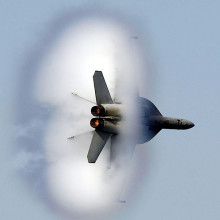
25:48 - Shock Physics
Shock Physics
with Dr Bill Proud, Cambridge University and Imperial College London
Helen - Well, another useful way of understanding explosions and explosive materials is to understand the shockwaves that they create and how these affect other materials, including living tissue. Dr. Bill Proud divides his time between the Cavendish labs here in Cambridge and the Institute of Shock Physics at Imperial College in London, and he's found some time to join us today. Hi, Bill. Thanks for coming along.
Bill - I'm very happy to be here.
Helen - Now, we've already mentioned the word shockwave, but what are these things?
Bill - Well, I think the easiest way to consider them is if you make any kind of sound in the room, any kinds of noise, you're sending out pressure pulses through the air, and people have generally heard of a thing called the speed of sound, and most people doing A levels, for example, say it's 330 metres a second. The thing about the shockwave though is that the pressure pulse is supersonic, with respect to the material 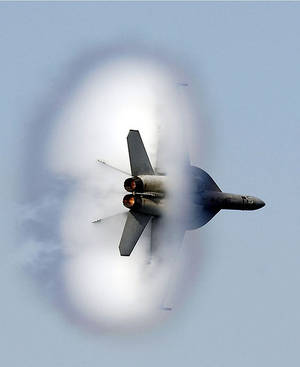 it's going through.
it's going through.
Helen - It's going faster than the speed of sound?
Bill - It's going faster than the speed of sound and the thing here is in the uncompressed material. So, what you're doing is, these pulses for example under normal explosive loading, you can take the density up to a factor of two times higher. You're compressing things by a factor of two, compared to what they would be like under normal conditions. And if you're going to nuclear weapons, if you're going really crazy, then you can compress things to five times their normal volume. And as well as this massive increase in density, the temperature of which those materials are can jump up several thousand degrees centigrade, but on a time scale of less than a microsecond.
Helen - So these are happening very, very quickly. So how on earth do we go about actually studying them?
Bill - Well, people have been trying to study the effects of these things for a variety of reasons and things like hauling and mining, mineral extraction and demolition of buildings et cetera, all these use explosives. Historically, even back in the Tudor times, people were trying to kill each other using quite large quantities of explosives. Up until say, about the end of the 19th century, people generally blew things up and looked at the after effects. But if you are interested in the photography at all, there's Eadweard Muybridge who looked at horses galloping, all four hooves off the ground at the same time, in the 1870s. He was using cameras which were very much like normal cameras, normal film cameras, which probably will be regarded as old fashioned technology these days, and these were developed and advanced. A gentleman called Courtney Pratt, who was working in the Cavendish Laboratory in the 1940s and '50s, developed a camera called an image converter camera and that could take an image on a microsecond timescale. At the present time, there are cameras made in the UK and this is one of the leading countries in terms of this type of camera development. They can take images at a billion frames a second. So, in one-thousand millionth of a second basically, you can capture an image.
Helen - So, these cameras are now letting you start to see much, much more detail of the anatomy of these explosions.
Bill - Exactly. You can see where materials break. You can see how they change shape, how long it takes for things to happen. Because one of the important differences between doing things at a low rate and doing things at a high rate is that at a high rate, things happen differently. You can imagine getting some shopping from a supermarket and you get one of those really flimsy plastic bags because you don't want to pay for the reusable bag, and you walk down the street and the handles stretched, and that's called creep. That's a very low rate, I would say. It takes a long time to happen.
Helen - That's quite a slow process, yes.
Bill - Very slow process.
Helen - Right.
Bill - Whereas a shock will be a case of trying to yank that handle on the plastic bag apart and then when it does break, after you scream because you actually discover the plastic's really strong at that point, you then discover that it breaks. It doesn't stretch. It has fractures across the surface and this is the important difference. As you go to these very high rates, you'll find that the material breaks in a different fashion because it doesn't have the time to break in a fashion that you will consider the normal way it's going to behave. And that's what makes it an interesting field of study.
Helen - Okay, so we've got these cameras that are now extremely fast. But how are we actually using these to study shockwaves? How are we employing these to understand more about what's happening when explosions happen?
Bill - Well, the cameras are very useful because they give you a full field view of what's going on and there's also gauges that you can put into it. So these are little sensors that you put inside the target and they give you pressure versus time. The main thing that you do experimentally is try to simplify the scenario. So take things from say, a three-dimensional case where things have very regular shapes make them have nice flat plates of material, and do impacts on those. The other thing you can do that simplifies the situation is - instead of using explosives (and for those people so interested, explosives have a sort of triangular pressure shape) you can use a thing called a plate impact gun. You fire a flat-ended projectile at a target and that puts in a square shaped pressure pulse, and you can control the height of that pressure pulse and the duration of that pressure pulse, independently of one another. So you can really probe the space. The pressure, temperature of volume, space that the material can occupy under these very high loadings and then relate it to the more complicated three-dimensional case of a structure or a building being exploded or being hit by an object, in order to understand it. If you can understand how things work in one dimension, you've got a chance in three dimensions. If you don't understand one dimension, as soon as you get to the real world, things are going to get terribly difficult quite quickly.
Helen - And are you mostly concerned with buildings and structures, and things that we create or also living matter and people as well.
Bill - Well, both in the Cavendish and in Imperial for a number of years now, we've been looking at a whole variety of materials. So, metals are quite commonly looked at, composites that are used in aircrafts, bird strike, things like that. We were quite interested in bird strike. That's an interesting subject because there's a little cycle happens there. People for a few years actually used dead birds to hit aircrafts with.
Helen - Frozen chickens, I heard.
Bill - Yes, that's the great story about howwe have to defrost the chicken out of Sainsbury's or wherever you buy it before you fire it at the train otherwise it does horrendous damage! So people used real birds and then they got a bit worried about that because it's a bit messy and smelly and you just swap to plastic bags full of gelatine and wood. The wood represents the backbone of the bird and they go through that. And then after a while, they cycle back to using real birds - it depends who retires and when they swap. So as well as doing bird strike, you might consider how do shockwaves genetically modify the material under very low, much lower impact conditions. Hit something hard enough - it'll take up the temperature. You'll kill it just by the temperature or the pressure will rupture the cell membranes. If you use lower pressures, you can modify the materials ever so slightly. Most of those modifications will of course ultimately kill the living organism. Here, we're thinking about cells, thinking about spores, and even in some cases, DNA, and that kind of material.
Helen - So, we want to deliberately use this as a way of actually killing things like bugs.
Bill - There is actually a greater push in things like the bread industry. In the food industry. You've got these very long tubes full of liquids, powders, and in some cases, gases. Now they're all used in food production and if something goes wrong there, how do you sterilise? You can pass chemicals down it, but there's also a big aim in things like flour production industries to pulse pressure the materials and knock the microbes out by destroying their membranes.
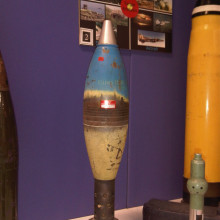
34:15 - Insensitive Munitions
Insensitive Munitions
with Professor Jackie Akhavan and Dr James Padfield, Cranfield University
Chris - The field of munitions, in other words, weaponry like shells, mortars, torpedoes, and so on; in this particular domain - safety is crucial. If you're handling something that's highly explosive, the last thing you want is for it to go off in your own hands or the hands of those people who are transporting it for you. So this week, Meera Senthilingam has been to find out how scientists are trying to ensure that the munitions we're creating now and are being used in warfare, only go off when they're supposed to.
Meera - This week, I've come along to the Defence Academy of United Kingdom, located in Shrivenham in Swindon, to find out about how the munitions used today in warfare are made as safe as possible and basically, made sure that they won't go off when they shouldn't. With me is Jacky Akhavan, head of the Centre for Defence Chemistry at Cranfield University. We've got a range of mortars in front of us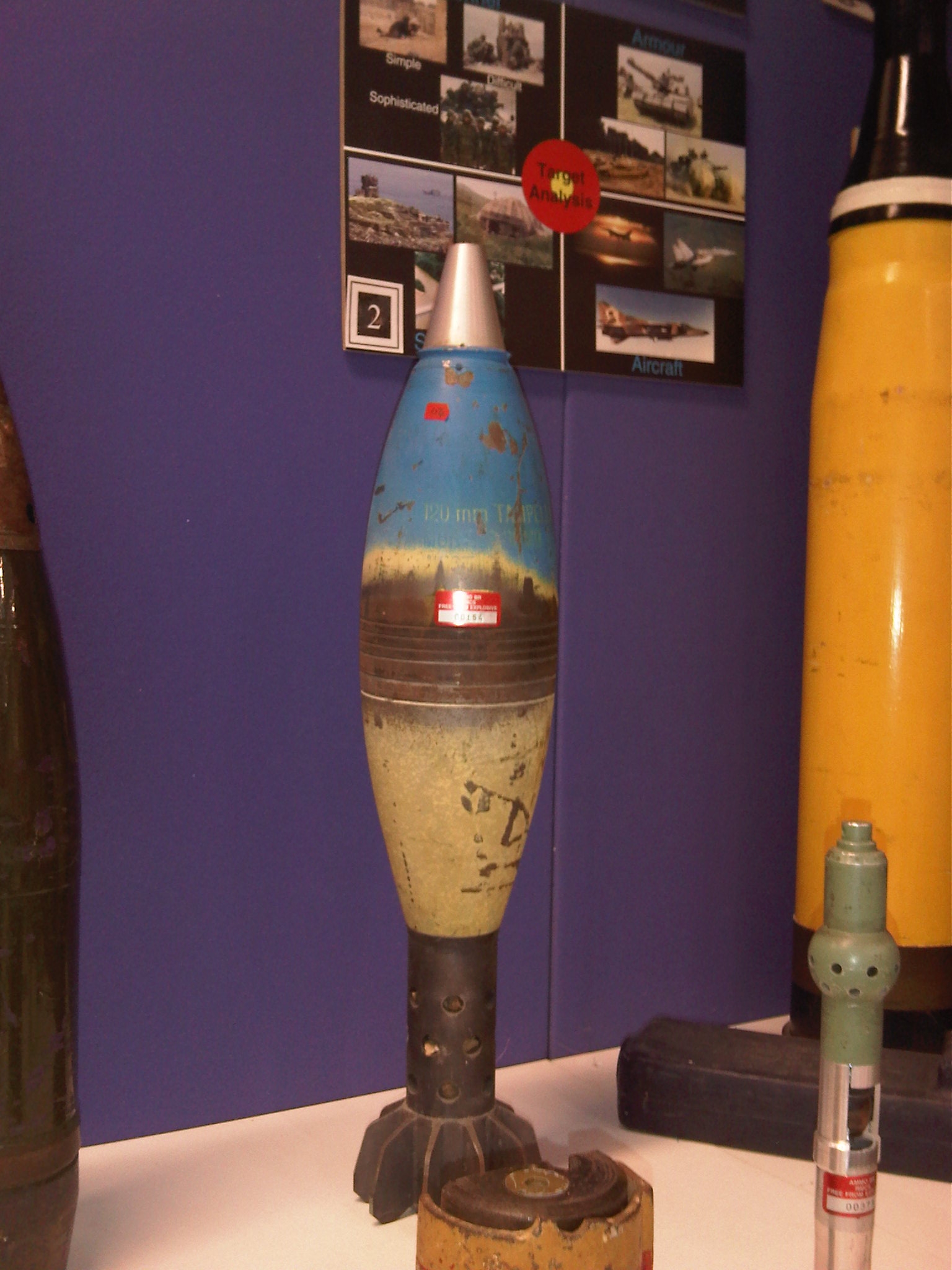 , how do these work?
, how do these work?
Jackie - You have, at the very bottom, a propellant. Before that, you have to ignite the propellant, so you would have an augmenting charge and then that would send the mortar up. When the mortar hits its target, the top of it will be squashed and then a pin will go through your explosive which then will send a shockwave into your main charge which does all the damage.
Meera - Traditionally, how do these types of munitions work? So, what explosives do they contain?
Jackie - Okay. Well, if you just go into the top bit, which is your fusing system, you would have a prime explosive in there which, generally speaking, would contain lead azide which is very sensitive. And then your main charge will be a combination of TNT, tri-nitrotoluene, with RDX. RDX stands for Research Development-X. It is an explosive. It's proper name is cyclotrimethylene-trinitramine.
Meera - And these materials aren't really in use as much anymore. So, why aren't they around? What were the flaws with these original designs?
Jackie - We do still use TNT and RDX, but we're trying to move away from TNT. And the reason is that first of all when you fill a munition with TNT, it shrinks when it cools down. You heat TNT up, it melts at 81 degrees centigrade and then you put in your other explosive, and then you cool it down, but you have to be very careful of the shrinkage. And also, over time, it tends to move around. So, it often comes out of the fusing system where you screw it in, you see these yellow crystals. And by moving around, you can sensitize the actual explosive. You might leave cracks and voids in the explosive, and also, around the top where it's coming out, it's quite sensitive.
Meera - So now, one way your team here are trying to get around some of these problems is by designing insensitive munitions?
Jackie - Yes, that's right. Insensitive munitions is a term to describe munition that in an accident, it won't detonate. The first thing is, we've got to take the TNT out. We have RDX, which looks like sugar, so we need to hold it in something else, but not TNT. The most common thing now is using a plastic, a polymer, and these new ones are called polymer bonded explosives. But polymers are inert whereas TNT is energetic, so we can't put too much in. So we tend to put about 95% of our high explosive with a small amount of polymer. It's like baking a cake where the polymer is your egg and the rest of the dry ingredients like the flour and sugar, is your explosive. When you mix it as we do, and then you put it into the oven, and like baking a cake, the actual composition goes solid. But it does form a very brittle type material. So, what we tend to do is add one more ingredient, like an oil, called a plasticizer, and that just gives ductility to the polymer. So if you drop it and it did crack, it wouldn't go off.
Meera - Having put all these materials together to make an insensitive munition, how do you go about making sure that this thing won't detonate under the wrong circumstances?
Jackie - What we tend to do is to do some preliminary tests, small scale powder tests. This is when we manufacture a very small quantity, then go and drop a weight on it, hit it with a hammer, or heat it up. There are standard tests we'll actually do.
Meera - And you're now going to take me along to your testing hall to see how some of these munitions are tested.
Jackie - Yes. We're going to go to the test house next...
Jackie - ...We're now in our test house and here, we have James Padfield who's a research fellow at the university and he's going to explain everything about the testing here.
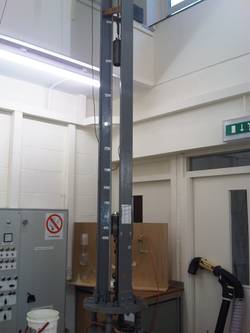 James - Hi, Meera. We have several tests here, I'll run you through a few of them. We have the Rotter test machine that measures a material's sensitiveness to impact when it gets dropped or something hits it. We have a friction test, an electric spark test, and we also have tests that measure the effect of heating and spark from a flame. We're looking for a very benign reaction, a sort of partial burn perhaps rather than a full explosion from an insensitive munition.
James - Hi, Meera. We have several tests here, I'll run you through a few of them. We have the Rotter test machine that measures a material's sensitiveness to impact when it gets dropped or something hits it. We have a friction test, an electric spark test, and we also have tests that measure the effect of heating and spark from a flame. We're looking for a very benign reaction, a sort of partial burn perhaps rather than a full explosion from an insensitive munition.
Meera - In front of us now, we have the Rotter test which tests to see how impact will affect a munition. There's a large tower, about 4 meters in height in front of me. What are the various components of this experiment, James?
James - We put a small sample of the explosive into the chamber at the bottom of the test and there's a 5-kilogram weight that we winch up the tower to a pre-determined height, and we drop the weight on the explosive.
Meera - Now, there's a small cap here that you would actually put the explosive into. The cap has a diameter of less than a centimetre?
James - About that, yes and the sample size, we use around about 30 milligrams. So yes, a very small amount.
Meera - What explosive are we going to test now?
James - This is going to be a sample of RDX.
Meera - What height are you going to drop the weight from?
James - I'm going to drop it from around about a metre and a half. Okay, so I've loaded sample into the brass cap.
Meera - Okay, so your just putting that at the bottom of the tower from which the weight will be dropped. So, the weight is being lifted up to a height of 150 centimetres. Okay. Let's go.
James - So now, we examined the sound bolt.
Meera - There's smoke coming out.
James - Yes, there's smoke and you can see the brass cap is being shattered by the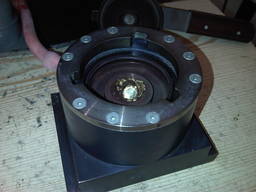 RDX going off when the weight hits it.
RDX going off when the weight hits it.
Meera - So, this was a definite explosion then?
James - Yes.
Meera - So that was a height of 150 centimetres. And so, how this works is the higher the height at which it doesn't go off, the better?
James - Yes, that's right.
Meera - And now, coming back to you, Jackie. Having done these various experiments on a small scale, I imagine you must have to test these using much greater quantities in order to see if they're usable in actual munitions?
Jackie - Yes. I mean, once it passes all our tests, and it will now go into an actual warhead, they're made into a munition. The whole munition, plus the packaging, plus the container will then need to be tested on a large scale, and this then will be taken to maybe Salisbury Plain or somewhere where this can be done. A few tests might involve dropping it from a height, maybe impact via a fragment, heating it up, put it on a bonfire. The response of these tests must be burning, not detonation.
Meera - Are these insensitive munitions in use now then?
Jackie - There aren't that many actually in use. Stormshadow is certainly one that's actually been classed as an insensitive munition. In the future, yes. Definitely all of them will be classed as insensitive. No new munitions will be allowed to be used particularly for the MOD, unless they are insensitive.
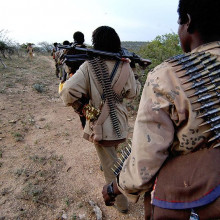
42:20 - The Ecology of Insurgency
The Ecology of Insurgency
with Professor Michael Spagat, Royal Holloway, University of London
Chris - Here on The Naked Scientists this week, we are talking about the science of explosions and one group of people who often use them are insurgents, in other words, terrorists. We're hearing about this on almost a daily basis in Afghanistan and also at times in Iraq. Now, it turns out that by studying the pattern of these events, we might be able to learn something and maybe even predict when they're going to happen. And Professor Michael Spagat who is at the Royal Holloway is working on this very thing. Hello, Michael.
Michael - Hello. How are you?
Chris - Very well, thank you. Welcome to The Naked Scientists. Do tell us a little bit about this work which you call The Ecology of Insurgency. 
Michael - Okay. The reason we call it The Ecology of Insurgency is because we think of the conflict process as being a struggle over some kind of limited resource. The limited resource might be various things. So for example, it might be space or it might be something more like media attention. So, if you imagine that there are a soup of insurgent units out there or guerrilla cells and then there are also anti-insurgent units that are seeking them out, sort of shuffling around in space, and randomly bumping into each other. Sometimes insurgent groups might bump into one another and they might coalesce into a stronger group. Sometimes they might feel under pressure and fragment into a bunch of smaller weaker groups or insurgents might encounter anti-insurgent forces in which case, there could be a bloody clash and there could be casualties.
At the same time, insurgent groups might be planning attacks which we think of as a way of trying to call attention to themselves, for example, through getting media attention. We think of this attack planning process very much in the same way that people plan the routes that they take, driving home from work for example, where they're trying to predict what other people are doing, they're trying to predict which roads are going to be empty and that they'll be able to drive down relatively easily. In the same way, insurgents are trying to predict what other insurgents are trying to do, struggling for this media attention. What they would want to do would be to launch attacks when other groups aren't launching attacks. But much in the manner that we  get traffic jams, people might be wrong in their predictions and they might hope that a certain road will be clear because the last three days, it's been clear and then it might turn out not to be clear.
get traffic jams, people might be wrong in their predictions and they might hope that a certain road will be clear because the last three days, it's been clear and then it might turn out not to be clear.
Chris - So you're saying, if we understand the pattern of these processes, then we'll be in a position to predict them?
Michael - Yes. I think we can at least get a leg up in trying to predict them. I don't think we can ever predict them with complete accuracy. But yes, you can see certain patterns of, let's say, quiet day, quiet day, heavy day. What happens on the fourth day after you've had a pattern like that for the last three days.
Chris - These people aren't daft though and now, you've published this paper which you published before Christmas in Nature, wasn't it? Are they potentially going to read your paper and think, "Well now, we'll change our tactics." And then you'll have to invent a new model.
Michael - I don't think that such a thing would happen. In the same way that seeing that traffic patterns tend to be bursty or that ,somehow, you can have a particular route that is quiet for a long time, and then busy. Even if drivers have all that knowledge, I think it's not going to undo the fundamental processes of second-guessing one another that leads to the pattern in the first place.
Chris - Is it still intriguing to think that in the same way as you see these fluxes in the way traffic jams build up in different routes around cities that you're seeing this same pattern with insurgency? How should people who are having to deal with insurgency change their practice in order to either minimise the impact of insurgents or to get rid of them?
Michael - Well, there are two things we find, one is this bursty pattern so that you have alternation of quiet periods and then suddenly, lots of attacks very quickly. And then the second thing we find is when you look at the size distribution of the events. That is, how many events do you have in which one person is killed, how many with two, how many with three, et cetera, up to attacks where hundreds of people are killed. What we find is that you get a lot more of the large events than you might have thought without actually looking at the data and the modellings. We're finding on the one hand, there's a bursty pattern where you suddenly get lots of events. And then also, large events are relatively common. And what that means is, in terms of emergency planning, that you've got to be ready with a lot of spare capacity because the system can be overloaded quite easily when you suddenly get lots of attacks and some of them are large.
How practical would it be to use a giant microwave to scan underneath a vehicle?
We posed this question to Dr Bill Proud...
The vehicles are generally moving along the road at some speed, say 30 miles an hour. The article you're trying to cause to explode is buried underground so you have to make sure that the waves can actually reach into the explosive, and all of this has got to happen in the millisecond or so that you've got in front of the vehicle. So you need a huge amount of power and you can't mount that much power and drive it down the road, basically baking the road in front of you to the required temperature. Also, think about what would happen to the wildlife and the general ecology around us as we're sending out that much power.
Can explosions bend around corners?
We posed this question to Dr Graham McShane...
Well, when a blast pulse hits a surface, some fraction of that blast pulse will reflect off of that surface. Depending on the geography of the area, the properties of the surface and the size of the bomb, the blast could go around many corners. It could follow quite a torturous route, reflecting off various surfaces. So, it could cause damage for quite a large area. It's all down to reflections.
How is it possible to take pictures at billions of frames every second?
We put this question to Bill Proud:
Well number one, you need a very intense bright light source. Some people actually use explosives to do the lighting for the system! The next thing you need is a thing called a CCD, Charge Capture Device, or CMOS camera. What you're doing is switching on high voltages, in and out very, very quickly. So it's high voltage pulses on a nanosecond duration with explosive as the lighting. These can be quite destructive experiments, even if you're doing quite small scale experiments.

56:41 - Are birds confused by steel in ships?
Are birds confused by steel in ships?
We put this question to Michael Brooke, from the Department of Zoology at Cambridge University and curator of birds in their museum:
I think that's fairly unlikely, even if it was migrating, crossing the sea in conditions where it was using the magnetic compass.
The distance over which a ship would cause distortion of that compass would really be pretty tiny. In my guess and it is a guess, it would be over maybe a maximum of 100 meters. And therefore, on that basis, the bird wouldn't have been pulled off course by the tanker.
Much more a case of the bird feeling knackered, seeing a ship and then landing on the ship.
So, I guess, once aboard a ship, a pigeon might be more or less inclined to leave, depending on various factors.
So, some of the factors could be the extent to which it has exhausted its fat - its fuel reserves. Obviously also another factor would be whether the crew were feeding it and if it was a time of year when the species was naturally migrating, that would put it in a mindset to press on, regardless.
Domestic pigeons that we see around Britain derive from the wild species, a rock dove, but it's now very difficult to establish what is the natural distribution of rock doves because rock doves have interbred with the domestic pigeons. Those domestic pigeons have been shifted around the world by people. So, now you can encounter them in most continents.
On the more distant continents, like Australia and New Zealand, we can be sure they have been introduced by man, but for example South East Asia, there may be a degree of uncertainty.
- Previous The Memory Grid
- Next Broken Bones and Glowing Worms
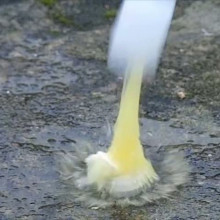










Comments
Add a comment